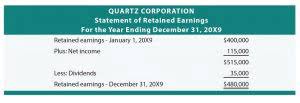Bookkeeping
What Is a Purchase Order PO?

The purchase order management process is a system that ensures purchase orders are drafted correctly and accurately to reflect desired purchases. Regular reporting and analysis of these KPIs can help organizations to identify areas for improvement and track progress over time. The key steps in the purchase order management process include purchase requisition, PO creation, PO approval, PO dispatch, receipt and inspection, invoice matching, payment processing, and record keeping. Creating a proactive risk management strategy is another way to strengthen purchase order management.
- Connecting PO management software with accounting, ERP, and inventory systems creates a unified procurement process.
- When a PMO and a PSO (or multiple PSOs) work together, the PMO can focus on overall strategy and planning while the PSO works on a more tactical level to ensure projects are successfully finished.
- Once the internal team has approved the purchase order, the PO is dispatched to the desired vendor or seller through a defined communication channel.
- After selecting a vendor and finalizing terms, the company generates a purchase order (PO).
- This saves time, eliminates duplicate entries, increases production efficiency, and enhances customer satisfaction and profitability.
What is a purchase order system?
While these two documents often end up looking similar, they are quite different. A PO is an offer from the buyer to the seller, while an invoice is a request for payment from the seller to the buyer. This document is an official offer from one company to another, which includes all pertinent information, including item descriptions, delivery dates, and payment terms.

Automate your Purchase Order Approvals

Imagine a construction job, where Acme Construction realizes they need more particle boards. They contact their vendor, Joe’s Lumber, and discuss the order over the phone. Each item on your order form should be accompanied by the quantity you wish to order and the price per unit for each item. You’ll use these figures retained earnings to calculate your order total and any tax applicable to the final transaction. In today’s blog post, I will discuss the PO, its importance, and its practical applications. Access and download collection of free Templates to help power your productivity and performance.
Increased cost savings
Larger companies may have a purchasing department dedicated to overseeing purchase orders. Smaller companies may rely on operations managers, financial managers, office managers or even business owners to create the purchase order. A planned purchase order is just like a standard purchase order, but the delivery dates are tentative, what is a purchase order and the quantity is based on an estimate of the future material requirements of the business.
- Businesses can use the purchase order to allocate funds and provide approval for each transaction, streamlining internal processes.
- Stock Keeping Unit or SKU is a unique alphanumeric number, assigned to variations of a product in terms of shape, color, size and more, that helps both parties keep track of inventory.
- Once verified, the finance team processes the payment according to the agreed payment terms.
- Periodically review your POs to spot trends, errors, or areas where you can improve.
Financial
Filing systems take up a lot of space in your office, and it takes a lot of labor to keep a paper-based record system running smoothly. Suddenly, they’re not buried in paperwork; they’re out there building rock-solid supplier relationships and negotiating deals that’ll make your competitors’ jaws drop. By cutting out the most repetitive tasks, you’re not just saving time – you’re unleashing your team’s potential to drive real value.
We see firsthand the value a PMO can bring to its organization, and as a PPM solution, we have the opportunity to help PMOs achieve successful outcomes. Like a tailormade suit, PMOs are cut and trimmed to fit the exact needs of its organization. For large enterprises, this customization sometimes goes further than the PMO to the creation of a Project Support Office (PSO) and a Project Office (PO). While this might just seem like an unnecessary number of acronyms, each office has specific and beneficial purposes. To prove this, I’m going to explain what each one is, what it does and how it works in an organization.

Purchase order vs invoice: What is the difference?
Purchase order management is a key element of procurement, bridging the gap between identifying a need and completing the purchase. Buyers are expected to Bakery Accounting pay the supplier according to the payment terms set out in the order itself. Generally, this means that buyers will pay the vendor after receiving an invoice for the purchased goods, though sometimes the seller may specify a payment deadline. Some sellers may request payment upon delivery, so make sure to check the terms before the date of delivery. Tracking purchase orders is an important element of smart accounting, and helps businesses ensure that they’ve received the goods or services that they’ve ordered. Meanwhile, tracking purchase orders is essential for ensuring that a business doesn’t pay twice for the same goods or services.
Products
- No sweat — we’re here to help you navigate the sometimes-confusing, almost always time-consuming work of PO management.
- Once the purchase request is approved, a formal purchase order (PO) is generated.
- PO meaning in business is that it is a legal document issued by a purchaser to the seller and is issued before product delivery.
- Maintaining efficiency, productivity, and profitability, while minimizing time-consuming bottlenecks, requires enforcing good inventory management standards and supplier management.
- No purchase order process should remain static—businesses that routinely evaluate and refine their approach will always have a competitive advantage.
Integration helps to ensure that all purchase data is accurate, up-to-date, and accessible across the organization. It also allows organizations to analyze spend data more effectively, identify trends and opportunities for cost savings, and make more informed procurement decisions. Automation helps to reduce errors, delays, and manual effort, while also providing greater visibility and control over the procurement process. The approval process ensures that the purchase is justified, budgeted for, and in compliance with organizational policies and procedures. If purchases aren’t properly tracked, businesses can exceed budgets without realizing it. Regularly reviewing financial reports and integrating purchase order data with accounting systems can prevent this.
